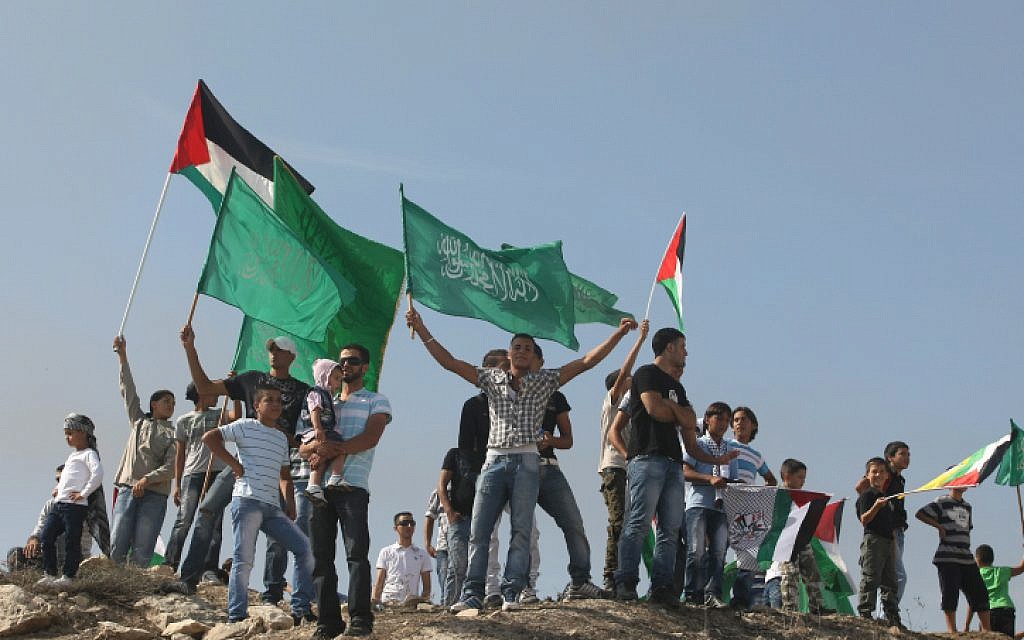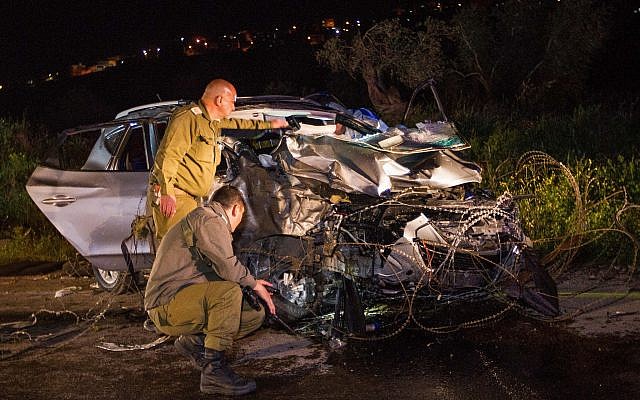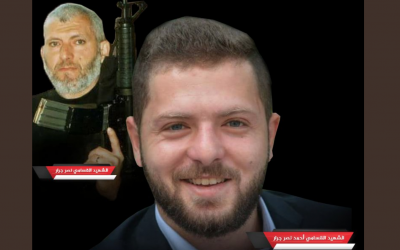Upcoming Land Day and Nakba Day protests set stage for violence engineered by Hamas from Gaza and abroad

The data available to Israel’s security establishment regarding the thwarting of so-called Palestinian “lone wolf attacks” is telling.
In 2017 alone, more than 1,300 such attacks — those without the support or operational backing of any terror group — were prevented. This marked a significant decline as compared to 2016, when more than 2,200 lone-wolf attacks were foiled.
But this year’s figures already show a persistent trend, with some 200 lone wolf attacks attempted in the past two months alone.
And while the data suggests the motivation among young Palestinians to carry out such attacks is on the decline, Friday’s attack demonstrated that it is still very much present, and liable to be lethal.
According to the Shin Bet security service, the interrogation of the car-rammer Ala Qabha along with other findings indicate it was a nationalistically motivated attack.

Qabha, who was released from Israeli prison just under a year ago, carried out the attack on the 100-day anniversary of US President Donald Trump’s recognition of Jerusalem as Israel’s capital, a day in which several Palestinian terror organizations — led by Hamas — sought to exact a price in blood.
Unfortunately, the coming months have no shortage of such anniversaries, and the motivation among Palestinians to carry out terror attacks will only increase.
At the end of this month, huge protests are being planned for “Land Day” under the theme of “processions of the great return,” which will likely feature Palestinians storming the West Bank security barrier as well as Israel’s border with Gaza.
These protests will be followed by similar events to commemorate Nakba (“Catastrophe”) Day — how Palestinians refer to Israel’s Independence Day — which falls around the same time as the holy month of Ramadan this year.
On top of all of these “festive” occasions, there are additional conditions in place that will surely increase motivation for attacks on the Palestinian side, especially among its youth: the lack of a diplomatic horizon, the dearth of hope, the leadership crisis on the Palestinian side, Israeli settlement construction, and the failure of the internal Palestinian reconciliation process.
Each of these conditions have been seen to amplify Palestinian despair.
Many times, however, this despair leads — as we have seen in recent years — to apathy. Accordingly, most West Bank Palestinians have largely remained in their homes, even during the most tense commemoration days.
On the other hand, this despair also motivates quite a few young Palestinians to want to carry out terror attacks: car-rammings, stabbings, shootings. And while obtaining the improvised weapons used in these attacks is not as easy as it used to be, there are still enough weapons in the West Bank to carry out shootings, without any terrorist organizational backing.
Hamas attempts to step up attacks
Along with these lone wolf attacks, one must add the organized effort — primarily from Hamas — to ignite the West Bank.
The Palestinian Authority has maintained its security coordination with Israel and has continued to prevent a considerable amount of attacks.
PA security forces have taken a number of steps in recent years to prevent harm to Israelis, while simultaneously targeting sources of funding from Hamas and the Palestinian Islamic Jihad.
However, Hamas, along with other terror groups, has continued in their efforts to carry out more organized, “classic” terror attacks.

For this purpose, Hamas has been operating from two bridgeheads.
One from Gaza, where the ironically labeled “West Bank Headquarters” operates the group’s terror infrastructure east of the Green Line. The branch is made up largely of former security prisoners who were deported to Gaza after being freed in the swap for captive IDF soldier Gilad Shalit in 2011.
Ahmed Jarrar, the terrorist who murdered Rabbi Raziel Shevach near the Havat Gilad outpost in the northern West Bank in January, received financial assistance from this very headquarters.
The second branch, the “West Bank Office,” operates with an identical goal and is similarly run by former security prisoners released in the Shalit exchange. However, these past convicts were deported abroad and operate from capitals such as Istanbul.
Together, the two branches and the looming anniversaries create an unstable environment for the next few months in our region, to say the least.
As reported by The Times of Israel
